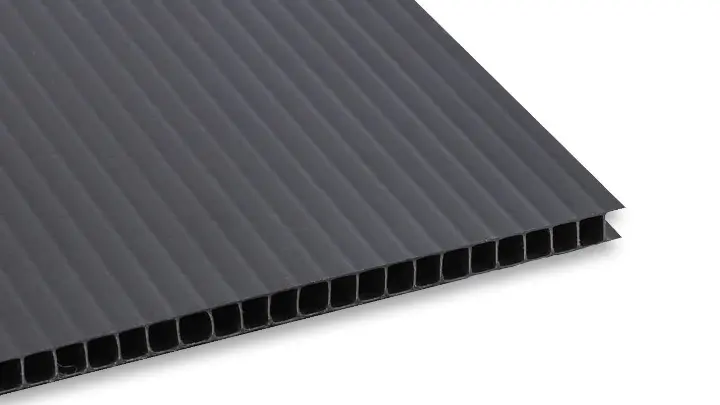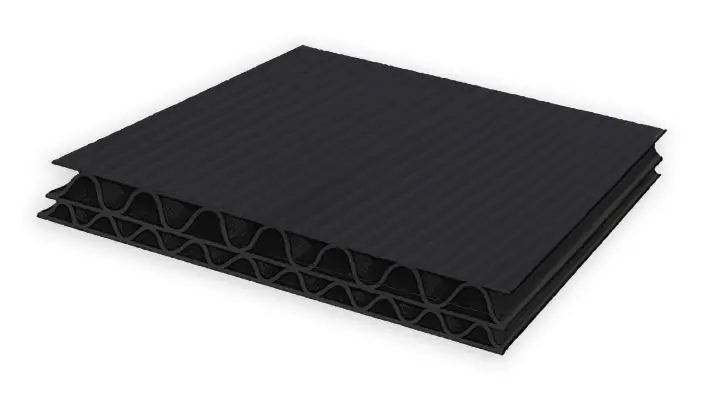The structure of a corrugated plastic board for floor protection determines the level of impact protection it provides. Single-wall and double-wall are the standard, and this guide explains the difference.
Let’s get started.
The Term ‘Wall’ in Corrugated Plastic Boards
The wall is a structural layer of corrugated board, consisting of 3-ply: ribbed patterns (inner) and linerboards (outer). Think of it like a sandwich—the ribbed patterns are the filling in the middle, and the linerboards are the slices of bread on either side.
Note: A corrugated kraft box has a similar design, but instead of the ribbed patterns, it features a fluted layer that resembles a wave. It’s good to be aware of the differences in case you confuse this with the corrugated polypropylene board design.
The triple-layer setup gives the board its strength without the bulk, which is what corrugated boards are known for. But that’s not all. The wall can be stacked with another wall (or more) to increase its ability to absorb impact.
This is where single-wall and double-wall types come in.
What Does Single-Wall Mean?
Single-wall refers to one layer of ribbed patterns between two flat linerboards. In simple terms, it’s the wall itself.
But things get a little technical here: twin-wall is sometimes used for single-wall corrugated boards. It’s called that way because the two linerboards give the board a “twin” or dual-layered appearance, even with only one ribbed layer in the middle.
To visualise this in the actual product, look at the board from the side, also referred to as the ‘edge’ or ‘cut edge.’ You should be able to see the ribbing (which may run in straight or angled lines) between two straight lines, one at the top and one at the bottom. If you’re online, you can zoom in on the product to see the details.

One good example is the Floorgard Corry Board Sheet. It’s a temporary floor protection made from polypropylene that offers impact protection through its corrugated twin-walled structure. This creates a gap between the floor and the object above, reducing the impact on the floor.
What Is a Double-Wall?
A double wall has two ribbed layers, each separated by linerboards—one in the middle and one on each side. That makes two walls in total, which is where the name comes from. Visually, it looks like this:

The design increases the board’s thickness and improves its impact absorption, though it can be chunky. You might also notice a slight bump in weight. If this feels a bit too much, a single- or twin-wall corrugated board is worth considering.
Many of our clients have seen great results with Floorgard Corry Board, and we can’t recommend our range enough if you’re looking for options. After all, it's one of our best-sellers!
Reach out to us at +44 28 9442 8611 or email hello@s-pgroup.com for a quote. Our 5-star rated customer service is ready to assist you in finding the right corry board for your floor protection needs.